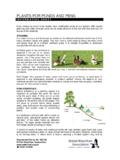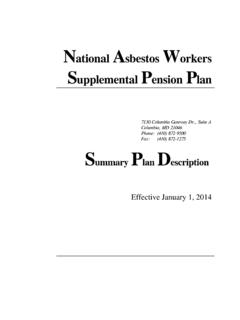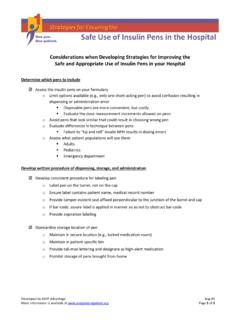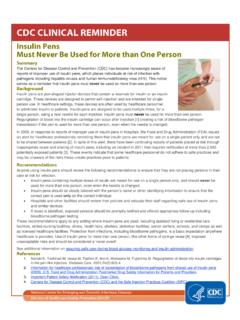Transcription of for Richard Binder’s Nib Smoothing Workshop - Fountain Pens
1 If you are not reading this copyrighted PDF document on , you should know that you are using stolen property. Notes for Richard binder 's Nib Smoothing Workshop If you are not reading this copyrighted PDF document on , you should know that you are using stolen property. Notes for Richard binder 's Nib Smoothing Workshop 2016 Richard F. binder All rights reserved under Pan-American and International Copyright Conventions. Except for brief excerpts included in a critical review, no portion of this work may be reproduced or represented in any form or manner whatsoever, including but not limited to acoustical, electrical, magnetic, mechanical, or optical copying, storage, translation, or transmission, without the prior written consent of the copyright holder. Version 2, revised 7 November 2016. If you are not reading this copyrighted PDF document on , you should know that you are using stolen property. I. Anatomy of a Nib Most nibs are firm nibs. Shown above is a typical firm nib, with its parts called out.
2 Learn the right names for the parts of a nib so that everyone will be talking the same language. Most especially, remember that a nib, just like a person, has a left side and a right side. Left and right always refer to the sides of the nib as shown here. (When you are looking at the underside of a nib, its right tine is to your left.) As shown by the two drawings below, flexible nibs (left) have longer slits and lower shoulders than firm nibs, and hence longer tines that can flex. Rigid nibs (right) have very short slits and high shoulders, making their tines very short and stiff; these nibs are sometimes jokingly called nails. Nib Smoothing Workshop Notes Page 1 of 10 If you are not reading this copyrighted PDF document on , you should know that you are using stolen property. II. How to Examine a Nib for Tip Alignment The first thing to do when you're Smoothing a nib is to make sure the tines are aligned. With that done, you have to make sure the two sides of the tip are aligned.
3 (Sometimes they won't be.) This diagram shows the correct way to examine a nib to see whether its tip is aligned. Why the odd angle? Sometimes, the two tips were not finished to the same shape, and sometimes they're worn. When this happens, the tines can be perfectly aligned, but the tips won't touch the paper together. You need to see whether the tips are aligned where they will touch the paper, so that they will touch it together. They don't touch the paper right at the very end or all the way around on the underside. Become one with the paper, Grasshopper. By placing your eye as shown in the third view, you are in effect placing it so that it is right on the surface of the paper, and this way you can really tell whether the tips are aligned as they should be. If you are tuning a nib for yourself, you can get someone to observe how steep an angle above the paper you hold the pen, and then you can tune the nib specifically for that angle. When you do this, adjust the angle at which you look to see whether the tips are aligned; for example, if you have a steep hold, then hold the pen more nearly vertical when checking alignment.
4 The alternative is to reshape one of the tips so that the tips will touch the paper to- gether when the tines are aligned, but that's beyond the scope of this Workshop . Nib Smoothing Workshop Notes Page 2 of 10 If you are not reading this copyrighted PDF document on , you should know that you are using stolen property. III. Tine Alignment Issues The first thing to look at when you're Smoothing a nib is its tine alignment. For this, look at the nib straight on from the end, as if you were going to poke yourself in the eye with it. This is what a properly aligned nib looks like: The tine tips are very slightly separated (approximately " mm). They are not touching because if they were touching and perfectly aligned, there would be no place for the ink to pass between them and get to the paper. Varying the separa- tion varies the nib's flow; simply by adjusting the tine gap you can produce a nib that flows very dryly, very wetly, or anywhere in between.
5 There is one exception to the no-touching rule, and that is flexible nibs. Their tip must be touching gently. Out of the box, nibs are often misaligned. You will see all of the following four types of misalignment: One tine up or down Slit tightly closed Grand Canyon slit Inverted Grand Canyon slit As you are looking at the first of these nibs, the right tine is up or the left tine is down. It really does not matter which way you identify it, the nib still won't work properly. I always call these misalignments right tine down or left tine down problems, just for the sake of consistency. Nib Smoothing Workshop Notes Page 3 of 10 If you are not reading this copyrighted PDF document on , you should know that you are using stolen property. The second nib shows the slit tightly closed. The only type of nib that will work properly with the slit like this is a flexible nib, which needs to start capillary flow before the tines begin to spread. The solution to the no ink to the paper problem is a little extra rounding of the slit edge where the nib touches the paper.
6 The third nib shows what can happen when the tines are bent downward a little to close the slit, as is done during manufacture. As the tines are bent down, they tend to move inward as well because of the curve across the nib's body. I call this prob- lem a Grand Canyon slit. Especially on broad nibs, a Grand Canyon slit is often ac- companied by a slight cupping of the under surface that can lift the slit clear of the paper and make the nib a hard starter. The fourth nib illustrates a problem most often found on cheap nibs, but any nib can have it. You can reduce the slit spacing by squeezing the tines together a little. This reduces the flow; but if you go too far, you need to spread the slit again. You do this by spreading the shoulders. When you spread the shoulders, they tend to rise, and when they do this, the tip can end up with an inverted Grand Canyon slit. What makes the situation potentially worse is that you can encounter a nib that has three of the four problems at the same time.
7 To correct the tine-up situation, start by forcing the high tine downward on the feed. Use a finger under the feed to support it, and push downward over the feed, not past its end. Pushing down past the feed's end can bend the tine sharply downward right at the end of the feed, and when you try to bend back up you'll end up raising the tine farther off the feed near the breather hole. This produces a knee, and correct- ing it once it's there is painful. Correct the tine-down situation by gently pushing up on the offending tine alongside the feed, not past its end, using a thumbnail. Hold the body of the nib down on the feed with a finger. Spread jammed-together tines by spreading the shoulders a little. Be careful not to go too far, or you can end up with an inverted Grand Canyon slit. Grand Canyon slits, in either direction, are more difficult. Sometimes you can solve a minor one by squeezing or spreading the tines, but these problems often require the use of pliers to twist the tines into position, and there is a significant risk of marring the surface of the nib (more with gold or palladium than with steel or titanium).
8 Nib Smoothing Workshop Notes Page 4 of 10 If you are not reading this copyrighted PDF document on , you should know that you are using stolen property. IV. Slit Alignment Issues Fountain pens rely on capillary action to draw ink to the tip of the nib, and from there onto the paper. Capillary action draws a liquid to the narrowest part of the slit. An ideal slit is tapered from the breather hole to the tip: Cheap nibs sometimes have a slit that isn't tapered (left, below). Capillary action has a hard time deciding where it wants to pull the ink, and flow can be unreliable. The slit may be too wide; flow will be very wet, but the nib can lose prime when the pen is held nib upward. When a nib has been sprung, even if the tines aren't off the feed, the slit can be coun- tertapered, widening from the breather hole to the tip (right, below). A nib with a slit like this won't flow at all. Nib Smoothing Workshop Notes Page 5 of 10 If you are not reading this copyrighted PDF document on , you should know that you are using stolen property.
9 V. Tip Shaping Issues Tip shaping can be a serious issue, even when a nib is just out of the box. One of the most common problems is an asymmetrically slit nib. Sometimes, the tipping mate- rial was welded onto the nib off center and the slitting machine (or person) has ac- counted for this by centering the slitting saw on the tipping material. A nib like this may look a little less than perfect, but it will work well when it's properly tuned. But sometimes the machine or person doing the slitting will miss the center of either the tipping material or the nib body, and this is what results: Looking closely at the tip, you can see that the left tine is shorter than the right tine. It is also smaller from top to bottom, and it will be relatively difficult but not im- possible to make this nib write properly. What is required is to remove material from the right tine's tipping material until it's as small as that on the left tine. Then you can smooth the tip.
10 The nib will be finer than advertised (XF instead of M, per- haps), but it will not be wasted. Even with a symmetrical tip, there can be problems. Here are three possibilities: Nib Smoothing Workshop Notes Page 6 of 10 If you are not reading this copyrighted PDF document on , you should know that you are using stolen property. The first nib shows what you get right off the slitting saw and in a surprising num- ber of inexpensive nibs. The edges of the slit are sharp, and the nib is scratchy even though it is perfectly aligned. The solution to this problem is to round the edges of the slit very slightly, just enough to break the sharp edges. (Flexible nibs need a tiny bit more rounding than firm or rigid nibs, so that the ink can sneak along the edge to get to the paper before the tines spread.) The most important area to round is where the tip contacts the paper (the writing pad). However, you also need to go down under the tip to handle low-angle holds and around the tip, all the way to just a little past the very end, to handle high-angle holds and also to prevent the nib from feeling draggy ( pushy ) on push strokes.







